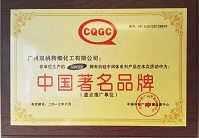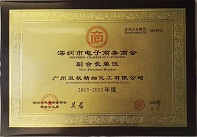
![]() E-mail: admin@gz-chemical.com
E-mail: admin@gz-chemical.com
Email us,best price and silane solutions for you!
Tel:+86 (20) 29035969

![]() E-mail: admin@gz-chemical.com
E-mail: admin@gz-chemical.com
Email us,best price and silane solutions for you!
Tel:+86 (20) 29035969


Chemists at Scripps Research have addressed one of the most formidable challenges
in synthetic chemistry by inventing a method for "enantioselective remote meta-CH
activation," which enables the making of chiral molecules that were previously difficult
or impossible to synthesize.
The method, reported today in Nature, is likely to be adopted widely for the making of
prospective drugs and other chemical products.
"This new method should allow us to explore a large 'chemical space' that had been
essentially off-limits," says Jin-Quan Yu, Ph.D., senior investigator and Frank and Ber
tha Hupp Professor of Chemistry at Scripps Research.
Chiral molecules are asymmetric, with "right hand" and "left hand" forms. Often only
one of these forms (called enantiomers) has the desired biological or chemical activity
, while the other is inert or even has unwanted side effects—and most ordinary reactio
ns yield an impure, 50:50 mix of both.
There are methods for turning a symmetric molecule into a chiral one and obtaining p
ure quantities of one enantiomer rather than the other. However, these methods typica
lly involve the attachment of a reactive cluster of atoms called a functional group to the
starting molecule at the point that becomes the center of asymmetry: the so-called chiral center. The new method attaches a new functional group relatively far from the chiral cen
ter—a feat previously achievable only by enzymes in living cells. Since the chiral center
typically contains another functional group, the resulting chiral molecule ends up with two
widely spaced functional groups, potentially conferring unique and potent bioactivity.
"The chiral molecules we can make with this method can be designed to interact with widely
spaced binding sites on a target protein, for example," Yu says.
Key to the new method is a specially designed helper molecule, a "transient chiral mediator,"
based on the organic compound norbornene. It enables the crucial step of attaching the
new functional group asymmetrically to an initially symmetric starting compound—far from the
chiral center on the molecular backbone but, even so, yielding nearly 100 percent pure
quantities of the desired enantiomer.
Yu's team demonstrated the technique by using it for the "remote chiral induction" of
benzylamines and phenylethyl amines, broad classes of molecules that form the bases for
many modern drugs as well as many biologically active compounds in plant and animal cells.
The resulting chiral molecules typically comprised more than 95 percent of the desired
enantiomer and less than 5 percent of the unwanted enantiomer.
Guangzhou Double Peach Fine Chemical Co.,Ltd
Address: No 3401 Huangpu East Road, Huangpu District, Guangzhou, China
Tel:+86 (20) 29035969 Fax:+86(20)29035979
Tel/Wechat/Whatsapp:0086 13826126978 admin@gz-chemical.com